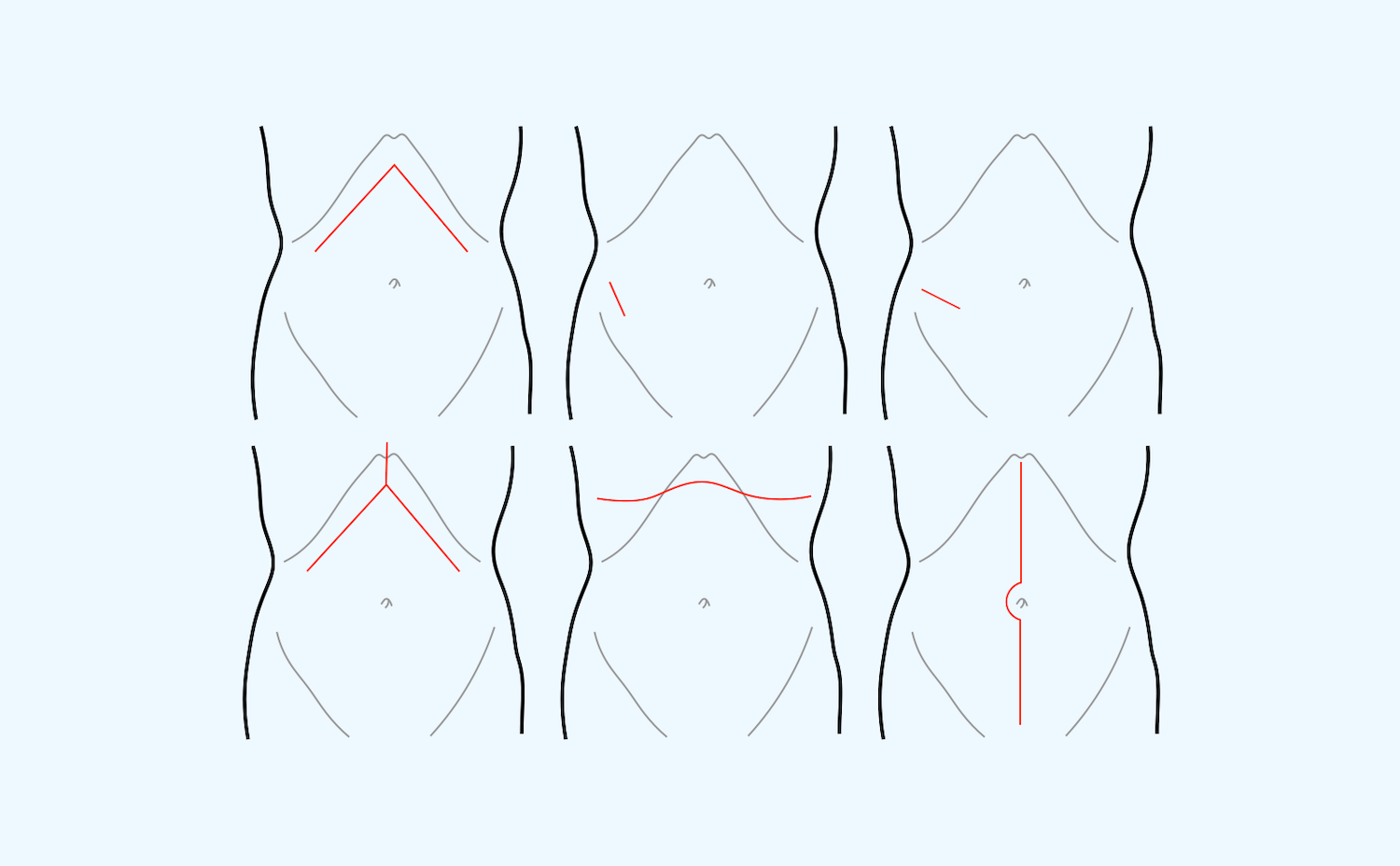On this page, you’ll find common or once-common surgical incisions. Knowing different types of incisions can give you an idea of a patient’s surgical history after visual inspection during the physical exam.
Chevron incision
- Subcostal incision that extends from mid to lateral along the lateral costal ridge, across the midline to the contralateral side
- For hepatic, pancreatic, upper GI, adrenal, or renal surgeries

Clamshell incision
- Large transverse incision that spans entire chest wall; also known as bilateral thoracotomy
- For massive chest trauma, lung transplant, or resection of chest tumors
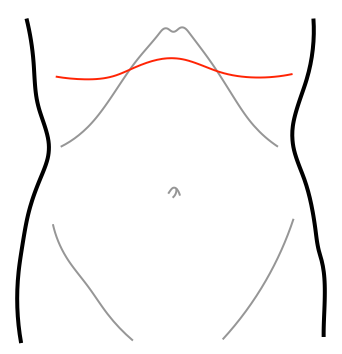
Infraumbilical incision
- Incision made inferior to umbilicus in lower abdomen; can be transverse or vertical
- For access into the peritoneum through the tissues surrounding the umbilicus (e.g., Hassan port)
Inguinal incision (groin incision)
- Single, long incision in the groin
- For open inguinal hernia repairs
Joel-Cohen incision
- Transverse lower abdominal incision made 3 centimeters inferior to the line joining the anterior superior iliac spines
- Similar to Pfannenstiel incision
- For Cesarean sections
Kocher incision (subcostal incision)
- Subcostal incision on the right side of the abdomen
- For exposure of gallbladder and biliary tree
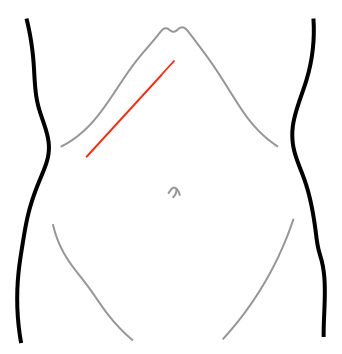
Maylard incision (Mackenrodt incision)
- Transverse incision 6 cm above the pubic tubercle made through the rectus abdominis through the linea alba
- For gynecologic surgeries
McBurney incision (Gridiron incision)
- Oblique incision that extends ⅔ from umbilicus to ASIS
- For open appendectomies
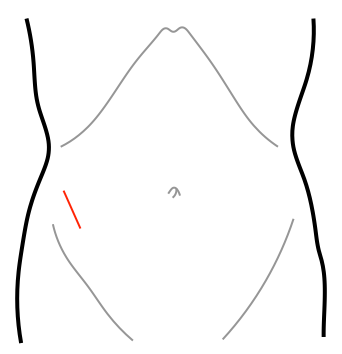
Median sternotomy incision
- Vertical incision along the sternum – sternum is later sawed in half
- For heart and lung surgeries
Mercedes-Benz incision
- Modification of chevron incision
- Classic chevron incision with a vertical incision that extends through the xiphoid and sternum
- For liver transplants or epigastric pathology that needs adequate exposure for debulking/removal
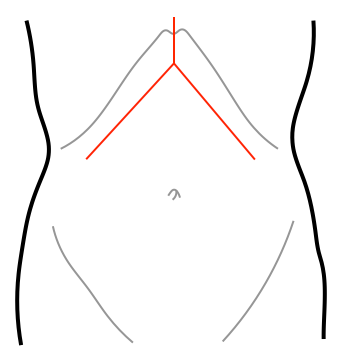
Midline laparotomy incision
- Vertical incision along the midline of the abdomen; can extend from xiphoid process to pubic symphysis, curving around umbilicus
- For open abdominal surgeries, including emergency surgeries

Paramedian incision
- Abdominal incision made a few centimeters lateral to midline
- For surgeries requiring exposure of lateral organs (e.g., stomach, liver, spleen, kidneys, adrenal glands)
Pararectus incision
- Incision made through semilunar line laterally to rectus abdominis
- For Spigelian hernia or ostomy (if modified)
Pfannenstiel incision
- Transverse lower abdominal incision made superior to pubic ridge
- For urologic, orthopedic, pelvic, or Cesarean sections
Rockey-Davis incision (Lanz incision)
- Horizontal incision at McBurney’s point
- For open appendectomies
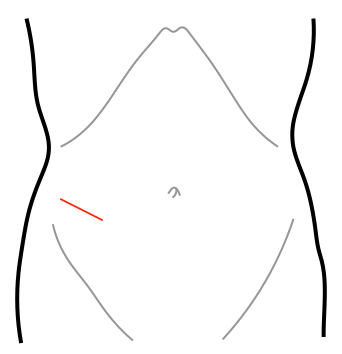
Subclavicular incision (infraclavicular incision)
- Incision made just inferior to the clavicle
- For surgeries requiring access to subclavian vessels
Supraclavicular incision
- Transverse incision made superior to the clavicle
- For surgeries requiring access to subclavian vessels
- Can meet sternotomy incision or cervical incision in order to provide better visualization to cervical or thoracic anatomy
Supraumbilical incision
- Incision made above the umbilicus, ⅓ of the way between umbilicus and xiphoid process
- For access into the peritoneum through the tissues surrounding the umbilicus
Thoracoabdominal incision (Ivor Lewis incision)
- Vertical incision through left or right upper quadrant and extended through eighth intercostal space from medial to lateral
- For exposure to lateral organs, retroperitoneal space, pleural space, and distal esophagus
- Left-sided: for exposure to stomach and distal esophagus
- Right-sided: for exposure to hepatic and right kidney
Trapdoor incision
- Incision that is a combination of collar incision, sternotomy, and extends below pectoral muscles
- Rarely used
- For control of bleeding from penetrating trauma to zone three of the neck and aortic arch aneurysms
